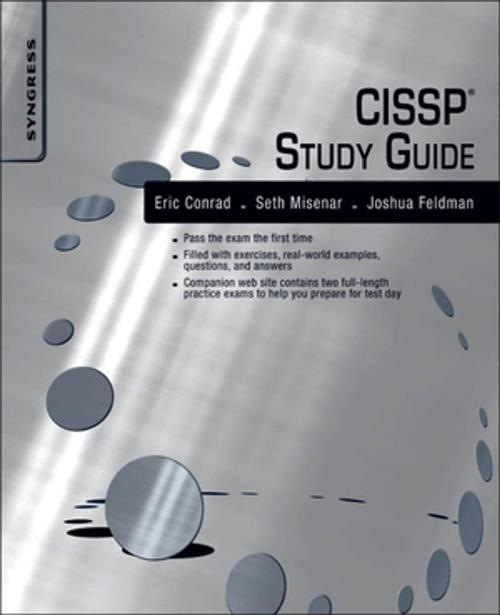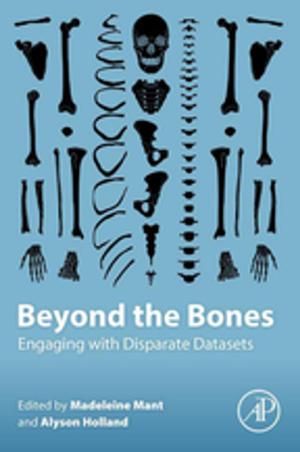CISSP Study Guide
Nonfiction, Computers, Advanced Computing, Information Technology, Networking & Communications, Computer Security, General Computing| Author: | Eric Conrad, Seth Misenar, Joshua Feldman | ISBN: | 9781597495646 |
| Publisher: | Elsevier Science | Publication: | September 16, 2010 |
| Imprint: | Syngress | Language: | English |
| Author: | Eric Conrad, Seth Misenar, Joshua Feldman |
| ISBN: | 9781597495646 |
| Publisher: | Elsevier Science |
| Publication: | September 16, 2010 |
| Imprint: | Syngress |
| Language: | English |
CISSP Study Guide serves as a review for those who want to take the Certified Information Systems Security Professional (CISSP) exam and obtain CISSP certification. The exam is designed to ensure that someone who is handling computer security in a company has a standardized body of knowledge.
The book is composed of 10 domains of the Common Body of Knowledge. In each section, it defines each domain. It also provides tips on how to prepare for the exam and take the exam. It also contains CISSP practice quizzes to test ones knowledge.
The first domain provides information about risk analysis and mitigation. It also discusses security governance. The second domain discusses different techniques for access control, which is the basis for all the security disciplines. The third domain explains the concepts behind cryptography, which is a secure way of communicating that is understood only by certain recipients. Domain 5 discusses security system design, which is fundamental for operating the system and software security components. Domain 6 is a critical domain in the Common Body of Knowledge, the Business Continuity Planning, and Disaster Recovery Planning. It is the final control against extreme events such as injury, loss of life, or failure of an organization. Domains 7, 8, and 9 discuss telecommunications and network security, application development security, and the operations domain, respectively. Domain 10 focuses on the major legal systems that provide a framework in determining the laws about information system.
- Clearly Stated Exam Objectives
- Unique Terms / Definitions
- Exam Warnings
- Helpful Notes
- Learning By Example
- Stepped Chapter Ending Questions
- Self Test Appendix
- Detailed Glossary
- Web Site (http://booksite.syngress.com/companion/conrad) Contains Two Practice Exams and Ten Podcasts-One for Each Domain
CISSP Study Guide serves as a review for those who want to take the Certified Information Systems Security Professional (CISSP) exam and obtain CISSP certification. The exam is designed to ensure that someone who is handling computer security in a company has a standardized body of knowledge.
The book is composed of 10 domains of the Common Body of Knowledge. In each section, it defines each domain. It also provides tips on how to prepare for the exam and take the exam. It also contains CISSP practice quizzes to test ones knowledge.
The first domain provides information about risk analysis and mitigation. It also discusses security governance. The second domain discusses different techniques for access control, which is the basis for all the security disciplines. The third domain explains the concepts behind cryptography, which is a secure way of communicating that is understood only by certain recipients. Domain 5 discusses security system design, which is fundamental for operating the system and software security components. Domain 6 is a critical domain in the Common Body of Knowledge, the Business Continuity Planning, and Disaster Recovery Planning. It is the final control against extreme events such as injury, loss of life, or failure of an organization. Domains 7, 8, and 9 discuss telecommunications and network security, application development security, and the operations domain, respectively. Domain 10 focuses on the major legal systems that provide a framework in determining the laws about information system.
- Clearly Stated Exam Objectives
- Unique Terms / Definitions
- Exam Warnings
- Helpful Notes
- Learning By Example
- Stepped Chapter Ending Questions
- Self Test Appendix
- Detailed Glossary
- Web Site (http://booksite.syngress.com/companion/conrad) Contains Two Practice Exams and Ten Podcasts-One for Each Domain















